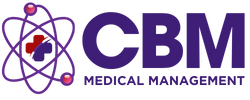In the complex landscape of mental health services, understanding the nuances of proper credentialing is crucial for healthcare providers. An often overlooked but essential component of this process is mastering taxonomy codes. But what exactly are taxonomy codes, and why are they so critical in mental health credentialing? Let’s delve into this crucial aspect backed by the extensive experience of CBM Medical Management, which boasts 40 years of expertise in Revenue Cycle Management and Practice Start-up.
What Are Taxonomy Codes?
Taxonomy codes are alphanumeric identifiers that provide a precise way to classify healthcare providers by their specialty and subspecialty. This classification system is a key component in the administrative side of healthcare, especially when it comes to credentialing and billing. In the realm of mental health, these codes ensure that providers are properly recognized for their specialized skills and training, facilitating appropriate reimbursement and efficient practice management.
The Role of Taxonomy Codes in Mental Health Credentialing
Credentialing is the process by which providers are vetted and approved to participate in insurance networks. It’s a critical step in establishing a legitimate and lucrative practice. Here is how taxonomy codes play a pivotal role:
- Provider Identification: Taxonomy codes help in identifying the specific qualifications and specialties of mental health professionals. This is crucial for insurers to verify that the provider is eligible to deliver certain services under their plans.
- Accuracy in Billing: Accurate taxonomy codes are essential for correct billing and reimbursement. Using the correct codes helps in minimizing billing errors and delays in payment.
- Streamlining Claims Processing: When claims are filed, taxonomy codes help insurers process them more efficiently, ensuring that they are handled by the appropriate department and minimizing the risk of claim denial due to administrative errors.
How to Find and Use the Correct Taxonomy Code
Choosing the right taxonomy code might seem daunting, but it’s essential for the smooth operation and financial health of your practice. Here are a few tips to ensure you are using the correct codes:
- Consult the National Provider Identifier (NPI) database: This database includes a comprehensive list of taxonomy codes. Providers can search through this to find the code that best describes their specialty.
- Understand the Subspecialties: Mental health encompasses a broad spectrum of services. Providers must look beyond general codes to find subspecialty codes that reflect their specific training and services offered.
- Regular Updates: Taxonomy codes can be updated or changed. It’s important to stay informed about these changes to ensure ongoing compliance and accurate billing.
Enhance Your Practice Through Expert Credentialing Services
Proper usage of taxonomy codes is just one part of ensuring that your mental health practice thrives. Comprehensive credentialing services can help streamline this complex process, ensuring you’re set up for success from day one. By taking care of these intricate details, you can focus more on providing care and less on administrative burdens.
Conclusion
Understanding and utilizing the correct taxonomy codes are crucial in the credentialing process for mental health professionals. These codes not only aid in proper billing and ensure smoother transactions with insurers but also help in maintaining the professional integrity of the practice. With expert guidance from seasoned professionals in healthcare management, like those at CBM Medical Management, mental health practitioners can navigate these complexities efficiently to build and maintain a successful practice.
If you’re ready to take your mental health practice to the next level, understanding and implementing correct taxonomy codes is a great place to start. Equip yourself with the right tools and knowledge, and watch your practice thrive.


